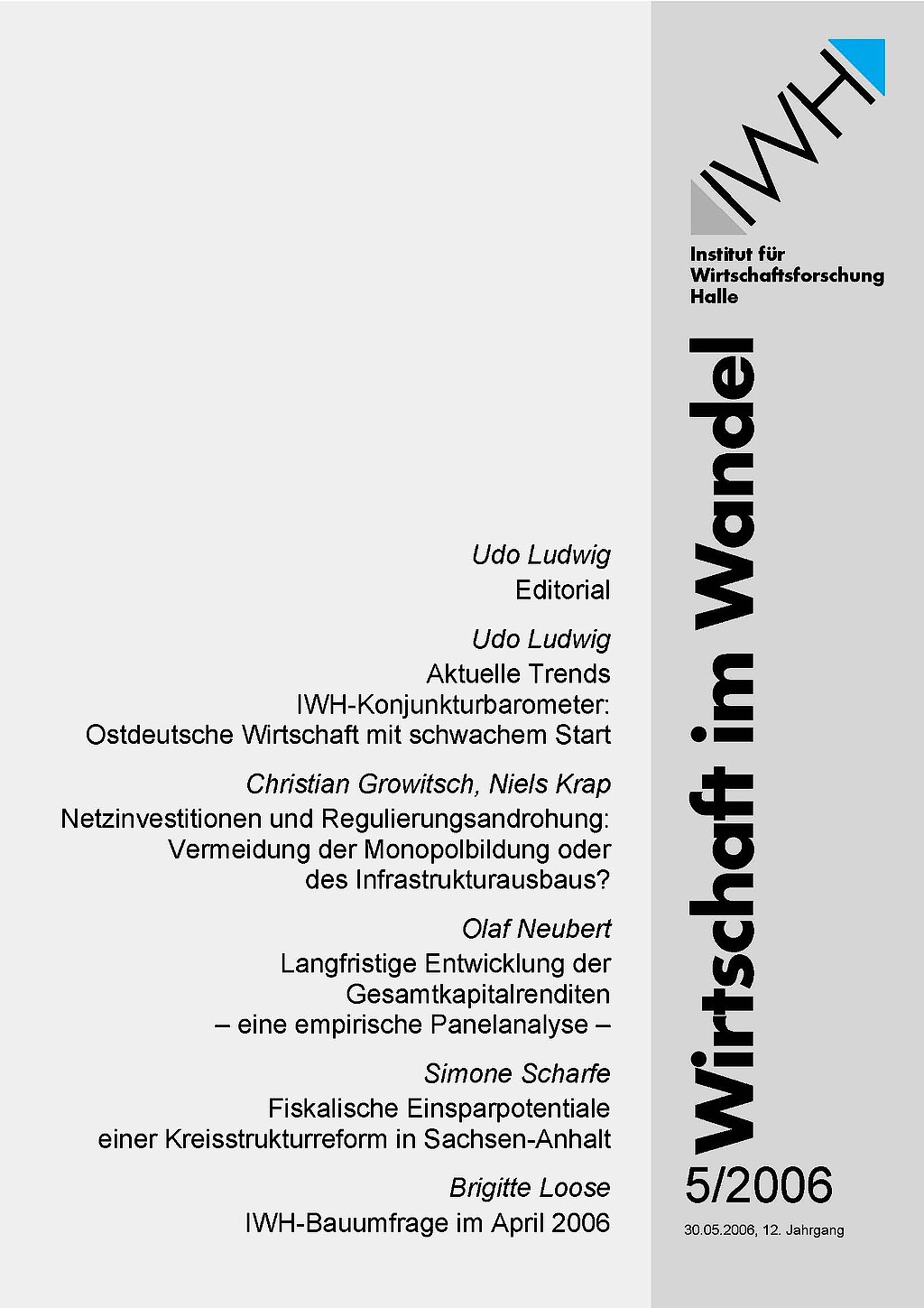
Longterm development of return on assets – an empirical panel data analysis
Eine der grundlegenden Aussagen der ökonomischen Theorie ist die Behauptung, daß Wettbewerb keine dauerhaften über- und unterdurchschnittlichen Renditen zuläßt. Wie kann jedoch ein dauerhafter Übergewinn eines Monopolisten von einem Innovationsgewinn unterschieden werden? In welchen Märkten sollte regulierend eingegriffen werden? Das dynamische Wettbewerbskonzept betrachtet im Gegensatz zur statischen Betrachtung explizit den zeitlichen Verlauf von Gewinnen und Renditen. Ein Unternehmer kann durch neue Produkte oder neue Produktionsprozesse einen Vorteil gegenüber seinen Wettbewerbern erzielen. Daraus entstehende Innovationsgewinne dienen wiederum als Anreiz für Imitatoren, sich dieser Entwicklung anzuschließen, was zu einer Verringerung der Übergewinne führt. Übergewinne stehen damit keinesfalls im Widerspruch zu einem funktionierenden Wettbewerb. Der vorliegende Beitrag untersucht auf Basis von Jahresabschlüssen deutscher Unternehmen die Entwicklung von Gesamtkapitalrenditen im zeitlichen Verlauf. Es soll untersucht werden, ob der von Schumpeter vermutete Anpassungsprozeß, der über- und unterdurchschnittliche Gewinne hin zu einem langfristigen Niveau angleicht, bestätigt werden kann und wie schnell ein derartiger Anpassungsprozeß abläuft. Für die mittleren Branchenrenditen des Produzierenden Gewerbes ist eine Konvergenz hin zu einem langfristigen Niveau festzustellen. Innerhalb dieses Prozesses werden im Mittel 40% der Abweichung vom langfristigen Niveau innerhalb eines Jahres abgeschmolzen. Bei der Betrachtung der Unternehmensrenditen konnten jedoch langfristig Unterschiede nachgewiesen werden. Für Unternehmen war die Anpassungsrate mit 50% im Vergleich zu den Branchenwerten deutlich höher. Bei der Betrachtung des Zusammenhanges zwischen der Anpassungsrate und dem langfristigen Renditeniveau auf Unternehmensebene zeigt sich, daß Unternehmen, die überdurchschnittlich starken Wettbewerbskräften ausgesetzt sind, ein höheres langfristiges Renditeniveau aufweisen als andere. Agieren Unternehmen in Märkten mit einem hohen Wettbewerbsdruck, erzielen sie keineswegs unter-, sondern vielmehr langfristig deutlich überdurchschnittlichen Renditen.




